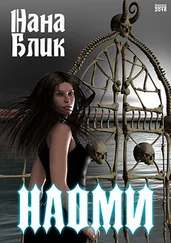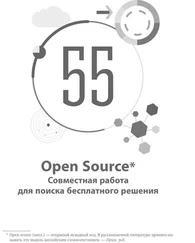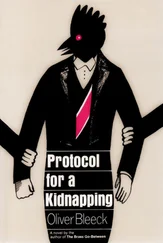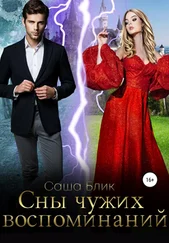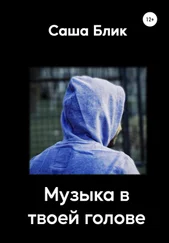I decided that it was a street from which the young had fled while the old stayed on. I was its lone pedestrian that afternoon as I walked down the cracked sidewalk, the leather heels of my black loafers banging out into that quiet that belonged in a small town, not a big city. As I walked I thought I could detect the rustle of a drawn curtain here and there and I assumed that suspicious old eyes were watching to see what house I stopped at. I may have been that month’s excitement on Ashworth Road.
Roses were the flowers there. Dark red roses that nodded in the warm May afternoon from behind chest-high brick walls and iron fences. They were the only friendly thing in sight and the front yard of the house at 99 Ashworth Road had its full share of them.
It was hard to tell how old he was, the man who answered my knock. He could have been a desiccated fifty or a not bad seventy. His was a dried, pinched face, tight and somehow unforgiving, and so deeply wrinkled that I wondered how he shaved.
“St. Ives,” he said, as if calling some long forgotten roll. And then after a pause, “Philip.”
“That’s right,” I said instead of present. “Doctor Christenberry?”
He nodded and started to open the door wider, but thought better of it. “You understand about the consultation fee?”
“Ten guineas.”
“Yes. That’s correct. Ten guineas.” He opened the door just wide enough for me to slip past him. He wore old, stained gray flannel trousers, carpet slippers, a gray coat sweater that was buttoned up wrong, and a tieless shirt that may have been white at one time, but which was now a sort of grayish yellow. He said, “How do you do?” as I came in and I noticed that he smelled.
The man whom the smell belonged to was Julian Christenberry and he had his doctorate from Heidelberg plus an M.A. and a F.S.A. from somewhere else, and according to the Assistant to the Master of the Armouries at the Tower of London, Doctor Julian Christenberry knew more than anyone else in the world about medieval armor and weaponry, unless I went to Oakeshott, who unfortunately was no longer available.
The small foyer that I found myself in was furnished with two stiff chairs, three awful paintings, and four suits of plate armor that stood stiffly about not doing much of anything other than collecting dust, except for the one whose right mailed fist held an old black hat, a gray scarf, and an umbrella.
“I think we’ll be more comfortable in here,” Christenberry said and pushed through a door that led to a sitting room that turned out to be a dim place with drawn curtains, one lighted floor lamp, and the kind of furniture that you would expect to find on Ashworth Road. Two lumpy-looking, overstuffed chairs hunched toward a fireplace that contained an electric heater. There was a couch slipcovered in a faded, flowery print. A dull brown rug covered most of the floor. A massive desk faced the curtained windows and was littered with pieces of paper that looked like bills. Here and there, rickety tables held big vases choked with roses.
Except for the walls, the room and its furniture seemed to be much like the man who lived there, worn and used up, not quite good enough to sell but not bad enough to throw out. The walls, however, were covered with items designed to bash heads, break bones, sever limbs, and knock out teeth. There were swords of all kinds, long ones and short ones, wide and thin, curved, straight, and wiggly. There were wicked daggers and stout war axes. There were harpins and catchpoles and partizans and halberds and poleaxes. There were maces and spiked flails and cudgels and even a caltrop or two.
It was quite a collection and I told Christenberry so. He nodded and smiled with yellow teeth. “And all designed with a single purpose,” he said. “To hurt. To maim. To kill.” The idea seemed to please him momentarily — until he thought of something less cheerful. “Unfortunately,” he said, “I’ve had to sell off the really good pieces. One by one I’ve sold them off to provide a bit of bread and meat for my table.”
I felt that I could take a hint as well as anyone so I brought out my wallet and handed him two five-pound notes along with a fifty-pence piece. “Ten guineas,” I said.
He pocketed the money hurriedly, apparently afraid that I might change my mind. “I suppose you’ll take tea?” he said, as if trying to be gracious, but knowing that he wasn’t very good at it.
“If it’s no bother.”
There were some tea things and an electric kettle on a table next to one of the lumpy armchairs and he started fooling around with them. On a plate by the kettle were four vanilla cookies, one of which had pink icing. The kettle was already starting to whistle and he gestured me to the chair opposite him. He took a single tea bag, dropped it into the pot, and then poured in what seemed to be about four cups of water. We sat there and waited for it to steep. He had his eyes half closed and his mouth half open and I wasn’t sure whether he was about to say something or doze off.
“You’re a journalist, are you?” he said after a while.
“A reporter.”
“What paper did you say you worked for?”
“I didn’t say, but it’s The New York Times .” I crossed my legs elegantly, the way that I thought a Times man might.
“Hmm,” he said. “They should be able to afford ten guineas. No need to feel sorry for them.”
“No need,” I said.
He twisted to his left and poured the tea. “What do you take?” he said.
“Sugar. One lump.”
He passed me my cup. Then he offered the plate of four cookies. “Biscuit?”
“No, thank you.”
He seemed relieved. He snatched up the one with the pink icing and crammed it into his mouth, chewing noisily.
I sipped my tea. It was weak. “Very good,” I said.
“You mentioned over the telephone that you were interested in medieval weaponry,” he said. “Don’t know why you should be. No one else is today.”
“I’m putting together an article on some of the lost and missing treasures of the world which lately seem to be popping up. For instance, about three years ago the Boston Museum of Fine Arts suddenly acquired a gaggle of gold treasures from the Bronze Age, from Turkey probably. Then there was that Raphael portrait of the Duchess of Urbino that the same museum got and had to give back to Italy. More recently has been the uproar concerning what they’re calling the Great Calyx Krater mystery. That was the Greek vase done by the Athenian artist Euphronius. It went for a million dollars and turned up in the Metropolitan Museum of Art in New York.”
“Can’t see how any of this has to do with armor,” Christenberry said.
“I’m coming to that, if you’ll bear with me. What we’d like to do is to anticipate some of the treasures that might pop up. The Peking Man, for example. That disappeared in China just after Pearl Harbor. Now there’s talk that it might turn up any day.”
“Not much interested in paintings,” Christenberry said. “Ignorant about them really. Greek pots, too. I seem to recall that the Peking Man’s nothing but old bones.”
“But priceless,” I said.
“Can’t see why. The world’s nothing but a graveyard filled with old bones.”
“That’s just one example,” I said. “We’ve also heard rumors that several other lost or missing items are about to surface. They’re just rumors though and I’m trying to check them out. For instance, I’ve got a line on somebody who claims to know the whereabouts of the crown of the Infante Fernando. Another lead I have to follow up on is that somebody’s holding the gold and silver shield of Ruy Diaz de Bivar. You know, El Cid.”
“I know,” Christenberry said drily.
Читать дальше



